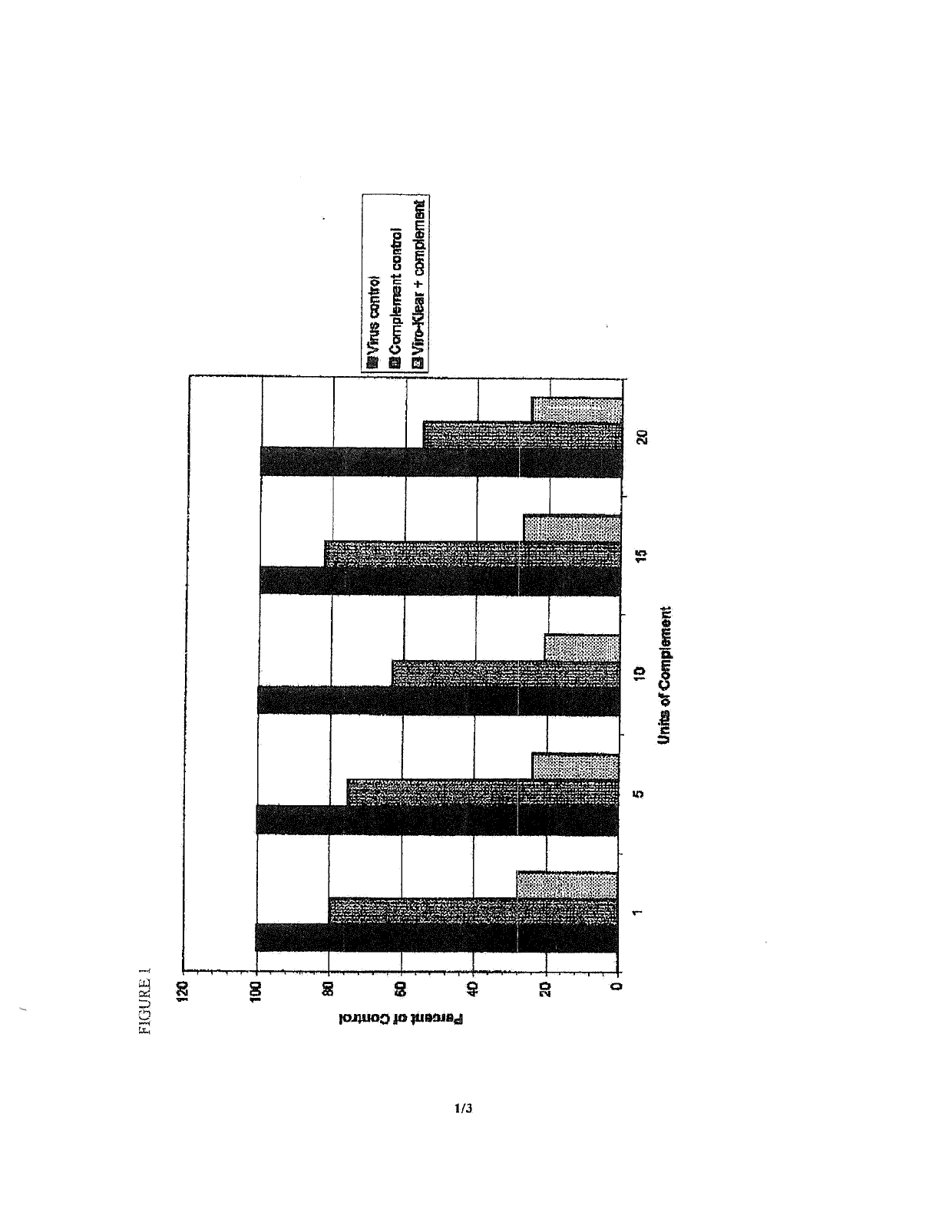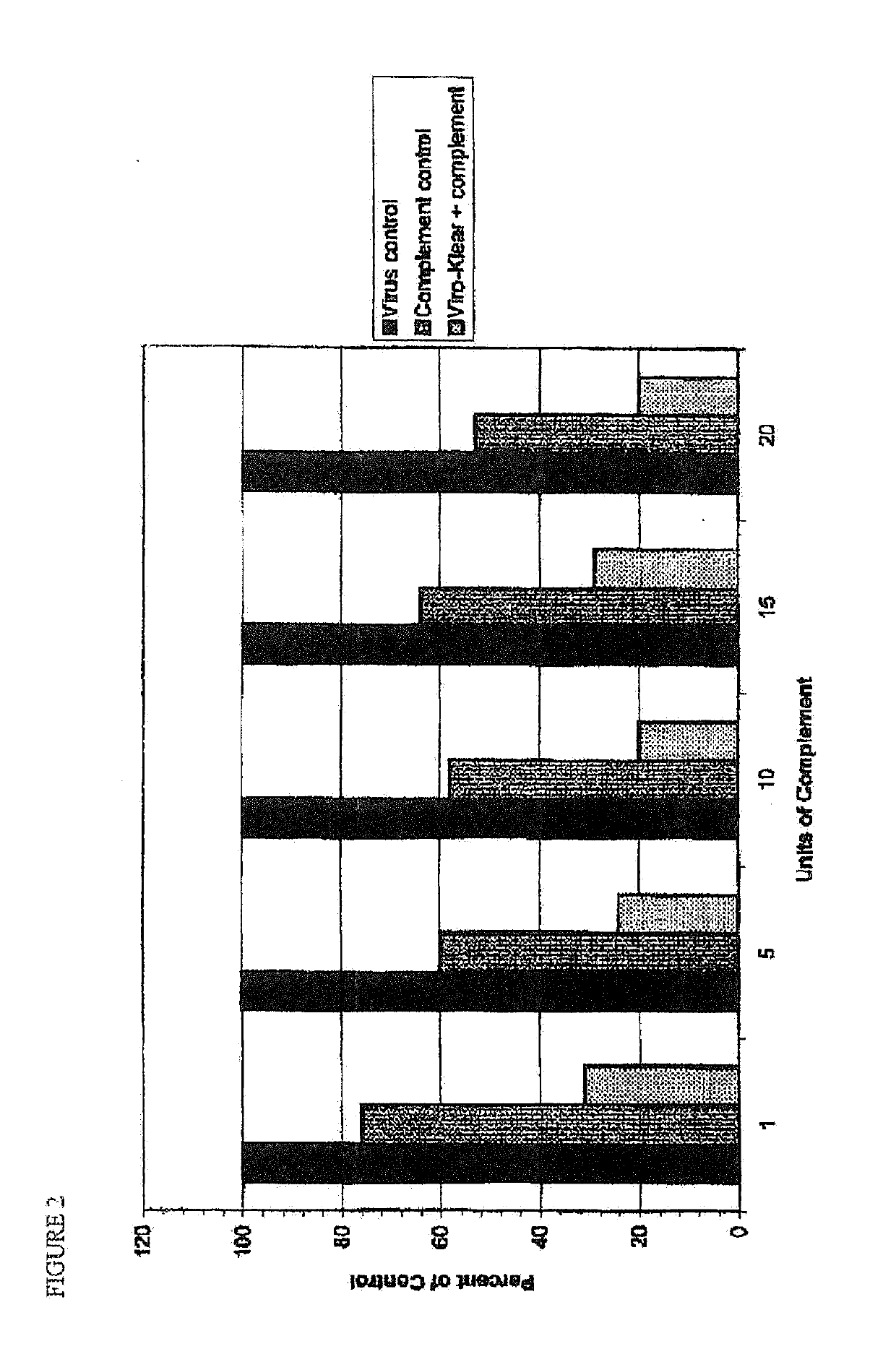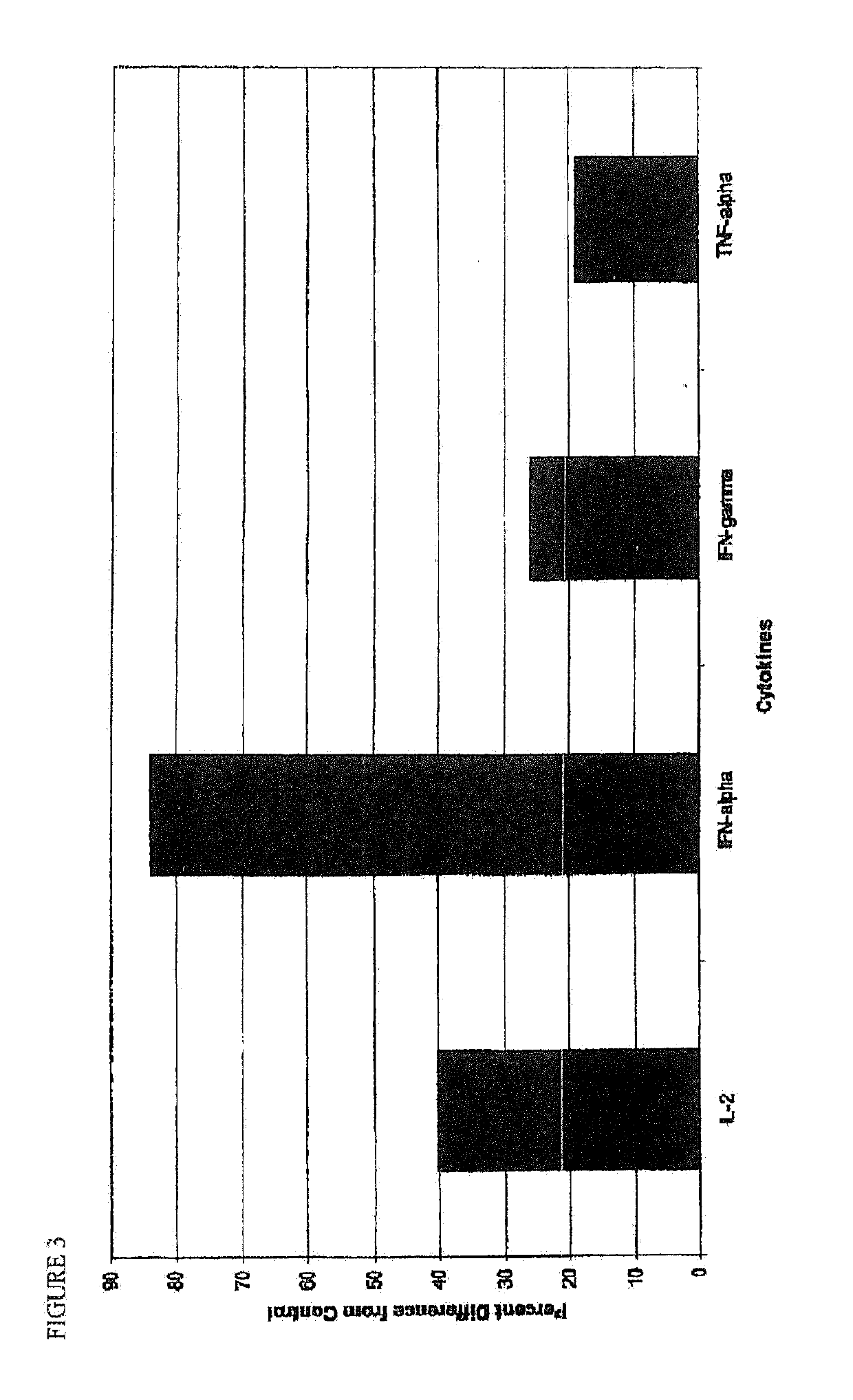Glycosidase regimen for treatment of infectious disease
a glycosidase and infectious disease technology, applied in the field of disease prevention, treatment and prevention of diseases, can solve the problems of reducing affecting the treatment effect of patients with hiv or aids, and suppressing the immune system of arvs, so as to improve the effectiveness of vaccines, prevent or mitigate infectious diseases, and facilitate glycosidase dose applicators
- Summary
- Abstract
- Description
- Claims
- Application Information
AI Technical Summary
Benefits of technology
Problems solved by technology
Method used
Image
Examples
example 1
HSV-1 Infectivity
[0079]Using HSV-1 as model virus, in vitro studies were initiated to determine the effect of neuraminidase and complement on viral infectivity and release from Vero cells. For infectivity studies, combinations of complement, virus and neuraminidase were incubated together, then added to Vero cells and incubated further. Following cell fixation and staining, the virus-forming plaques in the cells were counted. Results showed that incubating the virus with neuraminidase and complement together significantly (70-80%) reduced the virus' infectivity of Veto cells relative to controls (FIG. 1).
[0080]For Viral release studies. Vero cells were first infected with HSV-1. These cells were then incubated with various concentrations of complement and neuraminidase. Supernatants from the cell cultures were tested for plaque-forming ability, indicative of virus released from the cells. Results showed that, in the presence of both neuraminidase and complement, the release of free ...
example 2
Cytokine Release
[0081]The effect of neuraminidase on the production of certain cytokines in vitro was investigated. Cytokines are chemical messengers secreted by activated lymphocytes in response to infection. Any given cytokine, either alone or in combination with other cytokines, can have multiple effects on immune function. Interleukin-2 (TL-2), interferon alpha (IFN-α), interferon gamma (IFN-γ and tumor necrosis factor alpha (TNF-α) are important cytokines involved in host defense against viruses. IL-2, TNF-α and IFN-γ are produced by the T-helper (TH1) subset of T cells and are therefore associated with the inflammatory process. IL-2 and IFN-γ together activate macrophages, which are important immune cells that engulf and digest pathogens (phagocytosis), and also serve as antigen-presenting cells to T lymphocytes. IL-2 and IFN-γ also enhance the cytotoxicity of natural killer (NK) cells in clearing virally-infected cells. IFN-γ also enhances the expression of major histocompati...
PUM
| Property | Measurement | Unit |
|---|---|---|
| pH | aaaaa | aaaaa |
| pathogen resistance | aaaaa | aaaaa |
| stability | aaaaa | aaaaa |
Abstract
Description
Claims
Application Information
 Login to View More
Login to View More - R&D
- Intellectual Property
- Life Sciences
- Materials
- Tech Scout
- Unparalleled Data Quality
- Higher Quality Content
- 60% Fewer Hallucinations
Browse by: Latest US Patents, China's latest patents, Technical Efficacy Thesaurus, Application Domain, Technology Topic, Popular Technical Reports.
© 2025 PatSnap. All rights reserved.Legal|Privacy policy|Modern Slavery Act Transparency Statement|Sitemap|About US| Contact US: help@patsnap.com



